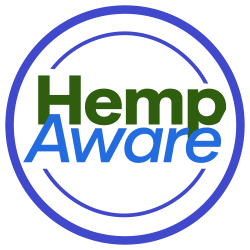It is easy for even the most responsible businesses to be tempted by growth in an already crowded market. Yet, reputable brands always stick to the rules for CBD marketing compliance guidelines when running each campaign, creating content, and introducing new products. Treat these rules as the base you need to advance and be secure.

Studying the laws that relate to CBD
CBD marketing techniques are unpredictable and change from one state to another as well as from platform to platform. What works for people in one marketplace may not work in another market at all. Lack of research results in extra problems that should have been avoided and more denials for ads.
Key actions:
Keep checking and obey all the guidelines for CBD that are released by the FDA:
•Check the regulations of every country, because some allow health statements whereas others approve only topicals.
•Check with those who govern in your industry for a set of words and images you are forbidden to use.
It is important to check how regulations change over time because they offer your main source of protection.
Formulating proper ways to manage claims
Make sure you stick to your decisions to eat healthy meals. Firms that are not running properly tend to say their services can address or sort out a medical problem. Those who break the rules are told to improve and are required to pay fines.
How to protect yourself against breaking the rules inadvertently.
Staying healthy by changing habits is given more importance than looking for medical help.
For example, teas could be presented as helping people feel relaxed.
Introduce the idea of helping them care for their health, instead of introducing it only as a requirement for medicine.
Read the media, reviews, ads, blogs, and captions to search for statements or claims that might be considered unrealistic.
It is important to conduct business using the guidelines of the corporation.
Each method in advertising has its own rules regarding CBD. Social media apps are known to reject harmless posts sent by their users. Research the networks you want to use before investing money in any advertising.
Standard actions:
It is fine to post educational material on Instagram as usually; however, you cannot run ads for products.
One will usually find that Google blocks advertisements about CBD and might decide to disallow landing pages promoting CBD as well.
They do not let anyone publish images or videos featuring CBD as part of eating.
Focus your brand’s campaigns on teaching or presenting how you use your products every day. Never make product shots or speak in direct buy terms as it could attract their attention.

Cooperate Only With Influencers Who Are Guided By The Rules
Influencer marketing will let your brand reach wide audiences, but things might get risky if they don’t follow your guidelines. Affiliates need to make sure they obey the disclosure and compliance laws.
How should we ensure that partnerships are safe?
•Write down the guidelines for dealing with discrimination complaints in the right tone.
•Explain to your team the words and topics that cannot be covered in your products.
•Correct errors as soon as possible by keeping an eye on users’ stories and posts.
What is stated in the ads should be both trustworthy and realistic.
Besides the language, the appearance of the product is just as significant to CBD brands. Try not to share pictures that seem to epidemiology in public health show quick and smooth outcomes.
Best practices:
•Leave out the photos taken or medical charts given by the doctor, especially those taken before treatment.
•Do not use pictures that have medications or needles in them.
•Take your shots to highlight people who are alive, nature places, or simple views.
•Sticking to the truth is the surest method to maintain both people’s loyalty and compliance.
The design elements should follow the requirements for compliance.
Most of these campaigns do not work because they are not in compliance with the laws on packaging. Look through all the labels before starting the campaign to avoid any rule violations when it goes online.
To check if the answer is right, you should use these steps:
•Be sure to locate every necessary disclaimer where it is easy to spot.
•Be honest about the THC content and provide the correct numbers whenever it is required.
•Give links to or QR codes for lab reports so that all project members can review them.
•Applying the correct label helps protect the campaign and inspires more trust from the public.
Assured Marketing Content
Many chances exist to educate others on CBD using blogs, guides, and videos, but there are legal issues if you handle them wrong. Try to give the important points without providing any suggestions or direct instructions.
Solutions to dealing with this challenge:
•Create content on the topic as a whole, its medical benefits, and solutions to common queries posted by others.
•Consult specialists who are not health professionals instead of asking doctors or clinicians about the topic.
•Remember to mention a disclaimer at the end of content that runs for a long time.
Use your content to highlight concerns, rather than trying to attract people with promises that everything can be solved fast.

Be honest and Do Not Trick People
Giving children facts is better than just telling them unrealistic fantasies. Watchdogs are one of many who prefer transparency in the answers they get.
Tactics:
•Making an FAQ hub where you post all questions that are in accordance with the law.
•Present data showing main trends concerning hemp.
•Allow customers to question the contents in the products and respond to them according to reviewed guidelines.
Lasting education is much better than a quick passing trend.
Putting compliance everywhere in your marketing process helps your CBD company keep a positive image. Both legal considerations and creative suggestions should collaborate, not stand in the way of what each other wants to accomplish for lasting recognition.





